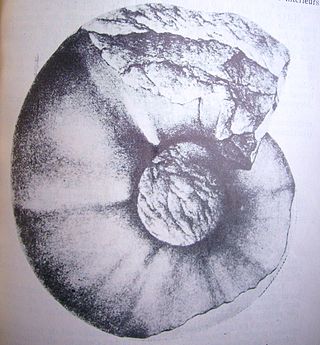Abrytasites
Genus of molluscs (fossil) From Wikipedia, the free encyclopedia
Abrytasites (Abrytusites) is an extinct genus of cephalopods belonging to the Ammonoidea subclass.[1]
| Abrytasites Temporal range: | |
|---|---|
 | |
| Abrytasites neumayri Haug, 1889 | |
| Scientific classification | |
| Domain: | Eukaryota |
| Kingdom: | Animalia |
| Phylum: | Mollusca |
| Class: | Cephalopoda |
| Subclass: | †Ammonoidea |
| Order: | †Ammonitida |
| Family: | †Desmoceratidae |
| Subfamily: | †Puzosiinae |
| Genus: | †Abrytasites Nikolov & Breskovski, 1969 |

Description
The genus was named after the ancient Roman town of Abrittus, located near the present Bulgarian city of Razgrad. There are several described species of Abrytasites, including A. thieuloyi, A. julianyi, and A. neumayri.[2][3] They are inflated, with constrictions, have rather thick ribs springing irregularly, singly or in pairs, from umbilical bullae. Their inner whorls closely resemble types species of Valdedorsella.[4] This animal lived 125–136.4 million years ago during the Hauterivian and the Barremian in Europe and western Africa.
See also
References
External links
Wikiwand - on
Seamless Wikipedia browsing. On steroids.
